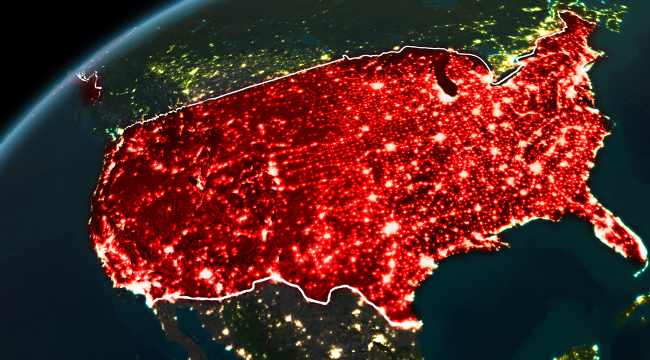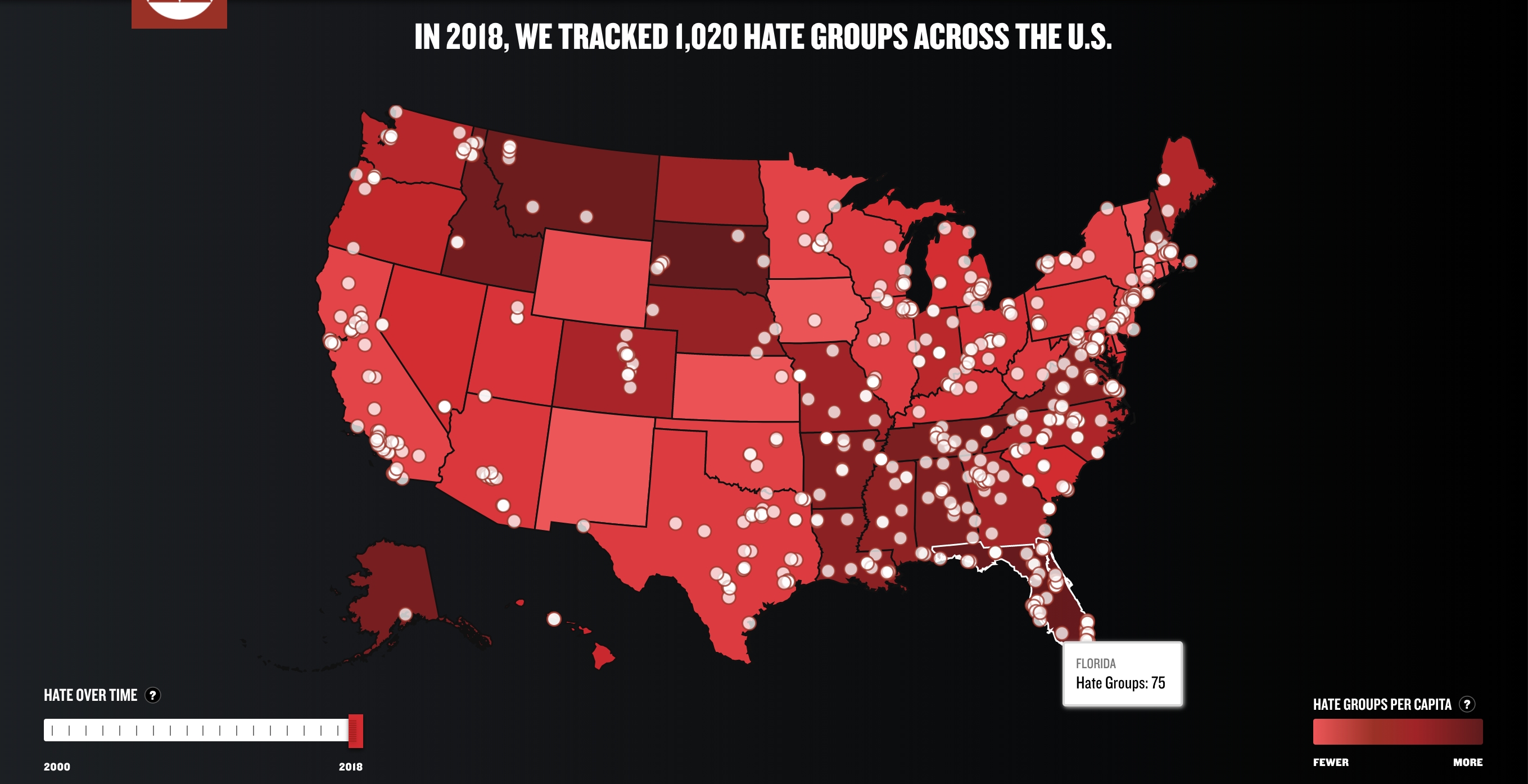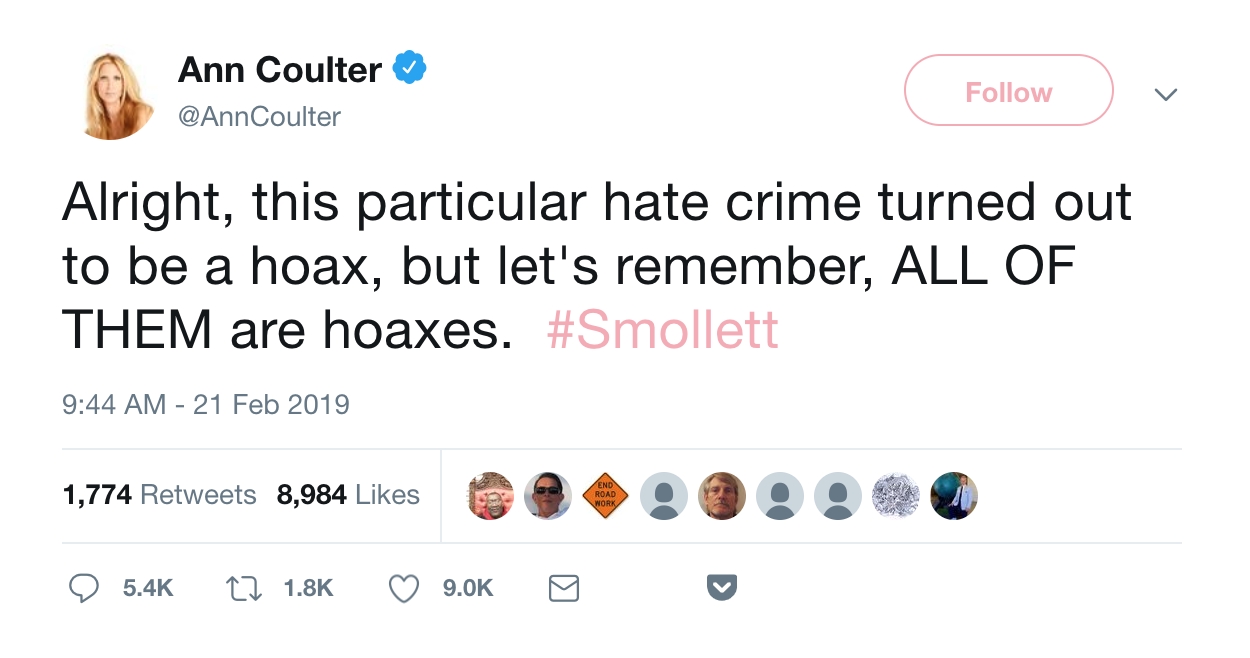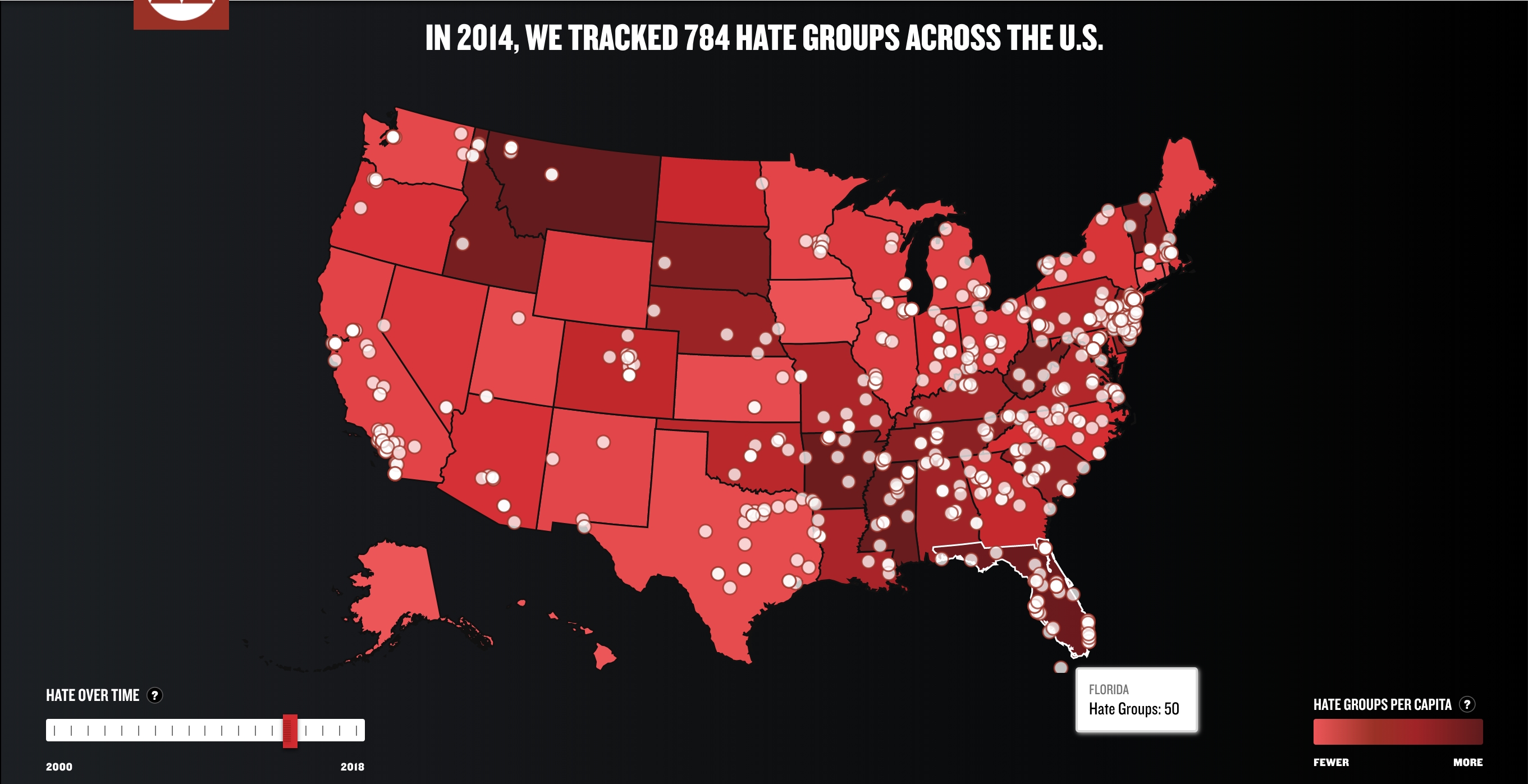
By now, just about everyone has an opinion about Jussie Smollett, the Empire actor who was charged last week with filing a false police report on a hate crime. Smollett’s actions have inspired countless takes from nearly every media outlet, and people are enraged equally across the political spectrum — be it legitimate anger at Smollett’s alleged actions and how they’ve belittled actual victims of hate crimes, or the type of political posturing that has come from right-wing personalities like Ann Coulter, who made the stunning claim that all hate crimes are hoaxes on her Twitter account.
Coulter may have been… joking? It’s hard to tell when someone has said so many putrid things. But make no mistake, hate is alive in well in America and it’s on the rise. Now, thanks to an interactive map created by the Southern Poverty Law Center, we know where hate groups have risen and which ideologies they practice across the country, with data spanning the last 18 years.

According to the SPLC, 2018 marks the fourth year straight that hate groups have risen in the United States with 1,020 different hate groups tracked this year, an increase of 7% over last year’s number. The SPLC defines a hate group as any organization whose leaders, activities, or statement of principles attacks a class of people, and while instances of violence are not required to be deemed a hate group by the SPLC, there has also been an increase in the number of hate crimes reported to the FBI by 30% between 2015-2017.
The hate groups tracked by the SPLC cover a wide range of ideologies across the political spectrum, but according to the New York Times, the SPLC have claimed in a statement that “Most hate groups in the US delved in some form of white supremacist ideology, like neo-Nazis, the Ku Klux Klan, and neo-Confederates.” White Nationalist groups, in particular, saw an increase of almost 50%, with 148 groups tracked in 2018 versus the 100 tracked in 2017.
According to a report by the Anti-Defamation League’s Center on Extremism, right-wing extremists were linked to 50 extremist-related murders in the United States last year, a 35% increase from the previous year, making it the fourth-deadliest year on record since 1970.
So when Ann Coulter or NY Post writer Sohrab Ahmari disingenuously try and posit that our current tense political atmosphere hasn’t come accompanied with violence due to right-wing extremism, that hate crimes are “bogus,” and the poisonous rhetoric coming from the right bears no responsibility — the facts simply aren’t in their favor.

In reference to last year’s Tree Of Life Synagogue attack in Pittsburgh, where 11 people lost their lives at the hands of a radical right-wing extremist, the president of the Anti-Defamation League Jonathan A. Greenblatt said in a statement,
“The white supremacist attack in Pittsburgh should serve as a wake-up call to everyone about the deadly consequences of hateful rhetoric… It’s time for our nation’s leaders to appropriately recognize the severity of the threat and to devote the necessary resources to address the scourge of right-wing extremism.”

While the early days of the 2016 Presidential election saw the troubling trend of an increase in extremist activity tracked by the SPLC — the number of hate groups had fallen for three straight years prior — putting the blame solely on Trump doesn’t respect the internet’s role in ramping up the rhetoric, as explained by Heidi Birch, the direct of the intelligence project at the SPLC, who stated in an interview reported by the New York Times:
“Trump has made people in the white supremacist movement move back into politics and the public domain… He is a critical aspect of this dynamic, but he is not the only reason why the ranks of hate groups are growing. The ability to propagate hate in the online space is key.”
Websites like Gab, 4-chan, Facebook and even Twitter can sometimes be bastions of white-supremacist rhetoric that gets disseminated — occasionally unknowingly — throughout the social media platforms, allowing white supremacists and other groups gather and form communities where they are radicalized by the kind of echo chambers that are created when one surrounds themselves with only “like-minded” individuals — or you know, Russian trolls.
Just over a week ago — the same week Smollett dominated headlines — a 32-year-old Muslim American man named Mustafa Ayoubi was shot and killed after a traffic incident in Indiana. Ayoubi was followed by Dustin Passarelli who allegedly yelled anti-Muslim slurs before shooting him through his car window with a Glock 19 two times, as reported by NBC news. But Passarelli won’t be charged with a hate crime, because Indiana — home to 24 hate groups in 2018 — is one in five states in the US that doesn’t have a hate crime law.
Last week also brought news of Christopher Paul Hasson’s arrest, a US Coast Guard lieutenant and self-described white-nationalist who was plotting to kill left-leaning media personalities, innocent civilians, and members of Congress on a scale unseen.
The point is this, if more people discussed the data and made use of the tireless research done by outlets like the Southern Poverty Law Center and the Anti-Defamation League, we might learn to take the troubling situation of rising hate in America more seriously. Clearly, it’s an urgent matter.
